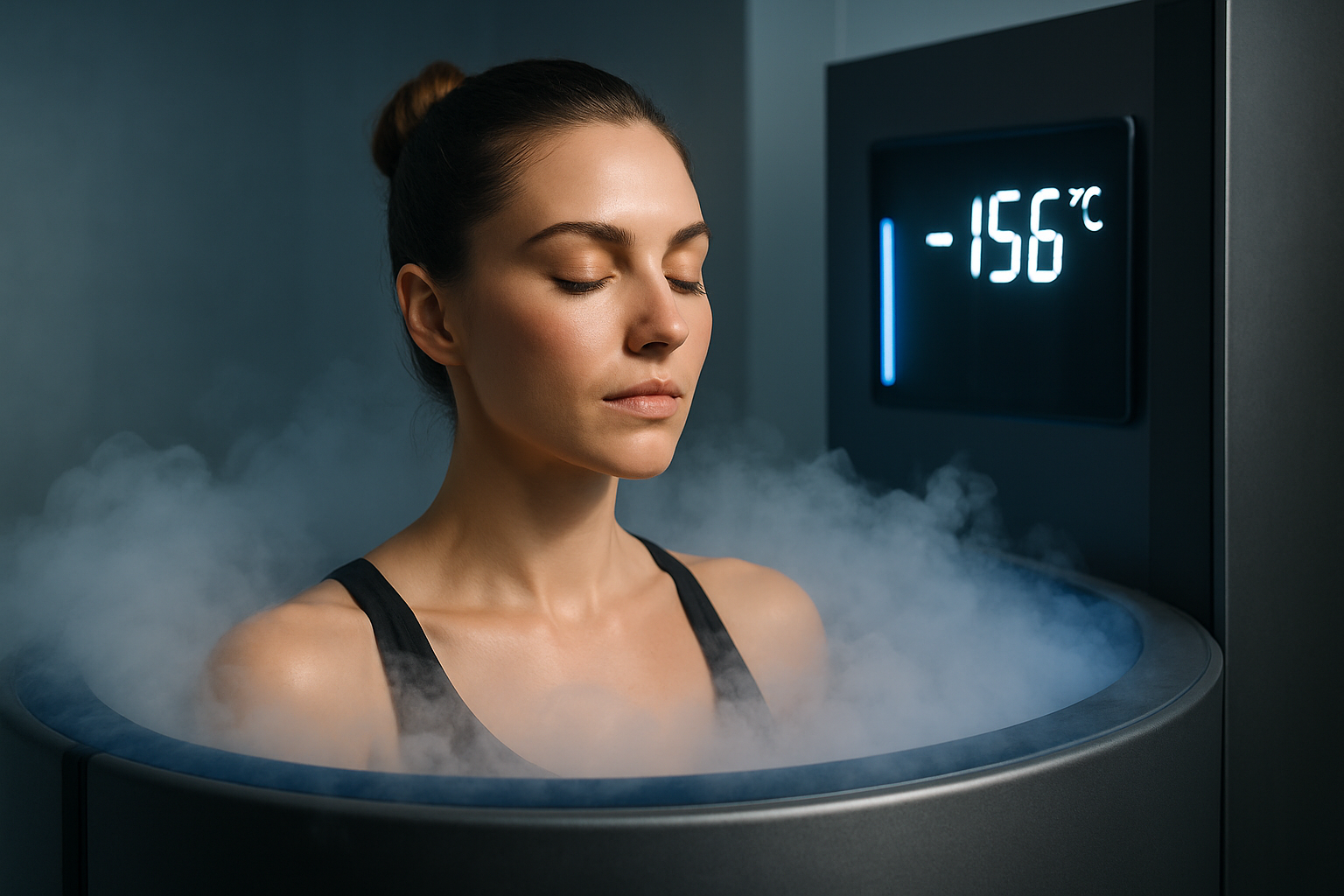Cryotherapy: The Cold Frontier in Beauty and Wellness
Picture yourself stepping into a chamber filled with swirling mist, the temperature plummeting to a bone-chilling -200°F. Your body's survival instincts kick in, sending blood rushing to your core to protect vital organs. This extreme cold exposure, lasting just a few minutes, is not a scene from a sci-fi movie but a cutting-edge beauty and wellness treatment known as cryotherapy. Proponents claim it can reduce inflammation, boost metabolism, and even slow aging. As this icy trend gains traction in spas and wellness centers worldwide, it's time to dive deep into the science, benefits, and potential risks of subjecting our bodies to sub-zero temperatures in the pursuit of health and beauty.

The Science Behind the Chill
The principle behind cryotherapy is simple: extreme cold exposure triggers a physiological response in the body. When subjected to temperatures below -100°F, the body enters a state of mild hypothermia. Blood vessels near the skin’s surface constrict, redirecting blood flow to vital organs. This process, known as vasoconstriction, is believed to reduce inflammation and flush out toxins when blood flow returns to normal.
During a typical session, participants spend two to four minutes in a cryotherapy chamber. As they exit and their body warms up, blood rushes back to the extremities, potentially carrying nutrients and oxygen more efficiently. This process is thought to boost circulation, stimulate the immune system, and increase the production of endorphins and anti-inflammatory proteins.
Cryotherapy in Beauty: More Than Skin Deep
In the beauty world, cryotherapy has gained a reputation as a non-invasive alternative to traditional anti-aging treatments. Proponents claim it can tighten skin, reduce the appearance of cellulite, and even boost collagen production. Some high-end spas now offer “cryo facials,” where liquid nitrogen is used to cool the skin, potentially reducing pore size and improving skin tone.
The theory is that the extreme cold causes blood vessels to constrict and then dilate, improving circulation and potentially stimulating collagen production. This increased blood flow may lead to a more radiant complexion and reduced appearance of fine lines and wrinkles. While anecdotal evidence is promising, more rigorous scientific studies are needed to confirm these beauty benefits.
Athletic Performance and Recovery
Perhaps the most well-documented use of cryotherapy is in sports medicine. Athletes have long used ice baths to recover from intense training sessions, and cryotherapy chambers offer a more intense and controlled version of this treatment. The extreme cold is believed to reduce muscle soreness, inflammation, and recovery time between workouts.
Several studies have shown promising results in this area. A 2011 study published in the Journal of Athletic Training found that cryotherapy was effective in reducing muscle pain and fatigue after exercise. Another study in the European Journal of Applied Physiology reported that cryotherapy could enhance athletic performance by reducing muscle damage and inflammation.
Beyond Beauty and Sports: Potential Health Benefits
Cryotherapy’s potential extends beyond cosmetic and athletic applications. Some research suggests it may have broader health benefits, including:
-
Pain management: Cryotherapy may help alleviate chronic pain conditions such as fibromyalgia and arthritis by reducing inflammation and numbing nerve endings.
-
Mood enhancement: The release of endorphins triggered by cryotherapy may help improve mood and reduce symptoms of anxiety and depression.
-
Metabolic boost: Some studies suggest that exposure to extreme cold can increase metabolism and potentially aid in weight loss efforts.
-
Sleep improvement: The endorphin release and stress reduction associated with cryotherapy may lead to better sleep quality.
Risks and Controversies
Despite its growing popularity, cryotherapy is not without risks and controversies. The U.S. Food and Drug Administration (FDA) has not approved whole-body cryotherapy devices for medical treatment, citing a lack of evidence for its purported health benefits. There are also concerns about potential side effects, including:
-
Frostbite and skin burns from improper use or prolonged exposure
-
Breathing difficulties due to the nitrogen-rich, oxygen-poor air in cryotherapy chambers
-
Claustrophobia or anxiety during treatment
-
Potential interactions with certain medical conditions or medications
It’s crucial for individuals considering cryotherapy to consult with a healthcare professional and ensure they’re receiving treatment from qualified practitioners in properly maintained facilities.
The Future of Cryotherapy
As research continues and technology advances, the future of cryotherapy in beauty and wellness looks promising but uncertain. More rigorous scientific studies are needed to fully understand its long-term effects and optimal usage. However, the growing interest from consumers and the wellness industry suggests that cryotherapy is more than just a passing fad.
Innovations in cryotherapy technology are already emerging, including localized cryotherapy devices for targeted treatments and at-home cryotherapy units. These developments could make the treatment more accessible and tailored to individual needs.
As we continue to explore the boundaries of what’s possible in beauty and wellness, cryotherapy stands out as a fascinating frontier. It challenges our perceptions of what our bodies can endure and potentially benefit from. Whether it will become a staple in our health and beauty routines or remain a niche treatment for athletes and adventurous spa-goers remains to be seen. What’s certain is that the allure of tapping into our body’s natural responses to extreme conditions will continue to captivate those seeking the cutting edge of wellness and beauty treatments.





